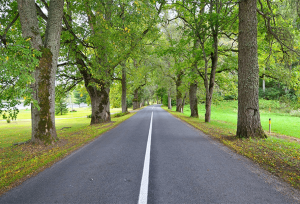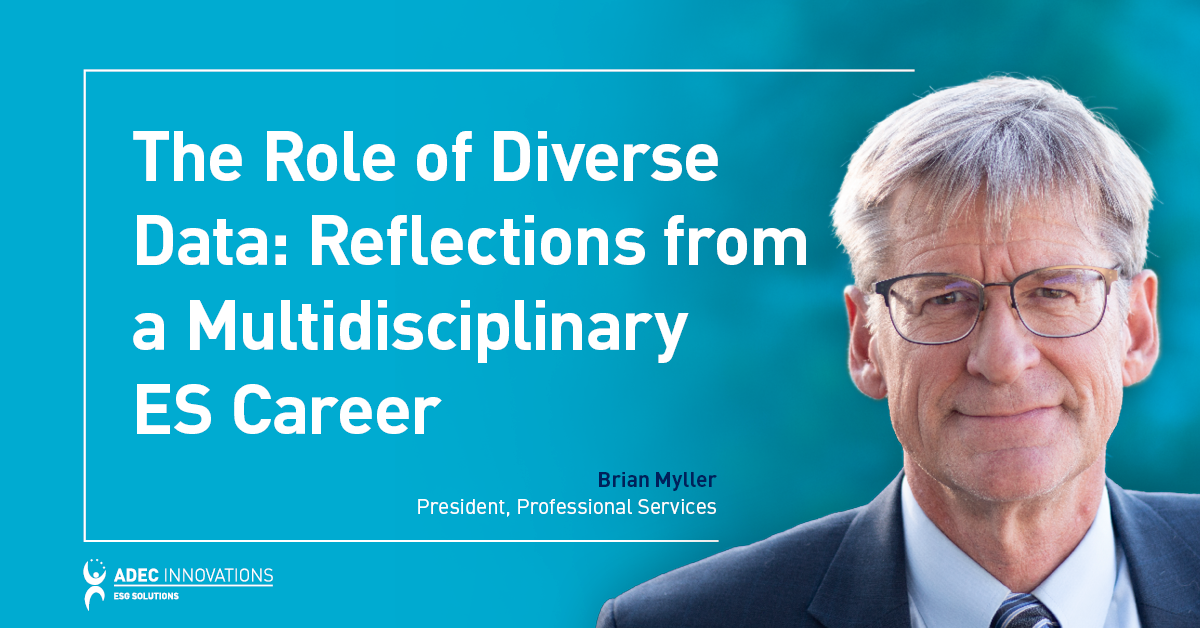
The United States (US) has more than 2.6 million miles of paved roads and highways. In addition, an estimated 250,000 acres of land in the US is either paved or repaved every year. Throughout the history of road construction, roads have served just one purpose – to get from Point A to Point B. With road building and road maintenance in our towns, cities and rural areas – there is more pavement than ever.
It may be easy to overlook the importance of roadways as we go about our daily lives. However, we should take note that the expanse of road between Point A and Point B provides an opportunity. From the increased global understanding of environmental issues such as water pollution and air pollution to concerns about energy generation and use, there is great potential for improvement when it comes to designing, constructing and using roadways. With ideas ranging from futuristic to time-tested designs, let’s consider what the humble road can do.
Whose Road Is This?
In the US, roadways have been designed for cars and trucks. This sounds like a no-brainer, so why point it out? Because there are places in the world where roadways are for more than just for cars and trucks. In the Netherlands, bicycling accounts for 27 percent of all vehicle trips. Don’t dismiss this as a utopic ideal that cannot be implemented in the US. Why the use of bicycles in the Netherlands is so high compared to the US is not solely a cultural difference, but largely an issue of appropriate infrastructure. Infrastructure, including dedicated paved space, is a necessary component to increase bicycle use. In the same way as infrastructure for other modes of alternative transit (such as light rail) is necessary for the viable use of alternative transportation.
Roadway design in the US has long been focused on car and truck travel only, while we largely overlook the opportunity to provide infrastructure for other modes of transportation. When it comes to approaching designs for new roads, road expansion and road revitalization, the opportunity to support other travel modes should be considered. Why is it important to provide space and infrastructure for more than just cars and trucks? That would warrant a whole article altogether, but to briefly summarize, it would cause: a decrease in fuel use, air pollution, deposition of mobile source toxics on roadways; and the increase of public health benefits, community interactions, aesthetic value and options for individual choice on transit modes.
What You Use
A great secret of roads is how recyclable they are. Both asphalt and concrete are recyclable, and recycling of these materials is cost and materials efficient. Recycled material can be used to construct the roads, and the road itself may be recycled if removed. Who knew?!
Environmental Interactions
Roads help generate and migrate environmental pollution in a variety of ways. Storm water that hits the road picks up the tire dust, brake dust, and other materials that were deposited on the road surface. Not only does rainwater pick up pollution, but the sheer volume of runoff during rain events can cause ecological issues and offsite erosion. Low Impact Development (LID), started out as a concept to create ecologically and economically superior alternatives to ‘conventional’ storm water management practices. Although LID has been around for more than 20 years and the concepts and designs have been proven effective, LID is still not widely practiced in the US. LID design concepts are based on treating the storm water and runoff issues at the source, such as integrating bioswales that redirect, treat and allow infiltration of rainwater. Part of the beauty of LID is that it helps design roadways in a way that accounts for the real environmental interactions of roads, thereby making the infrastructure costs more economical. Other benefits of LID include the conservation and even creation of biological resources, and increased aesthetic and community value of transportation infrastructure.
In addition to storm water, air pollution is another concern for roadways. Vehicles that travel on roads emit air pollutants that drift away from the road onto adjacent land uses. The EPA and a variety of universities have been studying the use of vegetative buffers and sound walls to reduce the concentrations of particulate matter and ultrafine particulate matter, emitted from roadway use. Results indicated that sound wall design reduces the flow of ultrafine particulate from the roadway onto adjacent uses. In addition, some types of trees not only physically impede the movement of particulate matter, but some with a high surface to volume ratio can act as mild filters with pollutants adhering to the plant matter. Vegetative buffers are, therefore, not only aesthetically appealing, but may assist in decreasing off-site exposure to vehicle-generated air pollution.
Finally, road design and construction has the potential to help reduce urban heat island effect and energy consumption related to nighttime lighting. How? High albedo (reflective) surfaces reduce the paved surface’s retention of heat from sun exposure by reflecting instead of absorbing the energy. In addition, the amount of light needed to illuminate an area paved with high-albedo material is less compared to an area using dark-colored material due to its reflective nature. A reduction in the lighting intensity or light fixture spacing can result in reduced energy use and associated energy cost savings. One doesn’t need to go to a science lab to find a source of high-albedo material. Light-colored concrete is highly reflective and is already available commercially.
Technology Meets Roads
Although electric cars have technically been around since the 1880s, they didn’t gain traction in the market until recently. Drivers are tu
rning to electric cars for a variety of reasons including concerns about increasing gas prices, the desire to be active in environmental stewardship, early adoption of technology, and just the simple ‘cool’ factor. Installing new (or even existing) technologies into cars is one thing, but including technology in the roadway itself is another.

Solar Roadways is a project that has gained traction and funding in the crowdsourcing realm. The concept of the project is to utilize road surfaces to generate power using modular tiles. Using road surfaces as a source of energy might sound a bit far-fetched today, but so did photovoltaic cells a few decades ago. Additional demonstration, testing, and possibly design refinement may show solar pavement tiles to be a viable construction option for roadways.
Solar-power generation isn’t the only George Jetson-sounding innovation. Self-driving (autonomous) cars are no longer a thing of fiction. Using a variety of tools such as lasers, cameras, and radar, autonomous vehicles have been demonstrated to successfully navigate existing roads. As this technology develops and becomes legally-implementable and culturally-adopted, roadway design and components that assist autonomous navigation would benefit roadway users. The time to think about the interactions of roadway infrastructure and emergent technologies begins now.
With an array of energy management innovations that is available today, FCS International (FCSI), formerly FirstCarbon Solutions (FCS), can help your company gain competitive advantage through our Energy Management Services that can help manage your energy data and gain foresight on possible energy trends. Start effectively managing your energy today by clicking on the button below.





